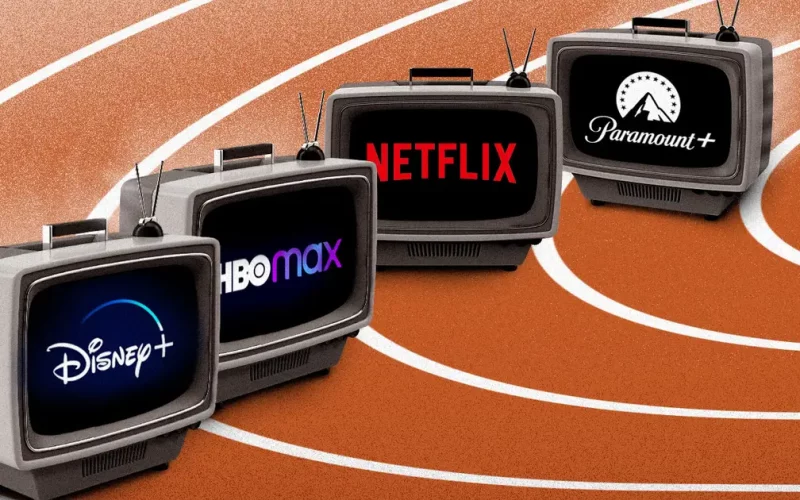Introduction
The landscape of television and media consumption has undergone a seismic shift over the past decade, primarily driven by the advent and proliferation of streaming services. Traditional TV networks, once the cornerstone of home entertainment, now find themselves navigating an increasingly complex and competitive environment. This article delves into the multifaceted impact of streaming on traditional TV networks, examining the challenges, opportunities, and future prospects for both mediums.
The Rise of Streaming

-
Historical Context
Streaming services have rapidly evolved from niche platforms to mainstream giants. The inception of streaming can be traced back to the early 2000s with the launch of services like Netflix, which initially operated as a DVD rental service before transitioning to online streaming in 2007. This shift marked the beginning of a new era in media consumption.
-
Market Penetration and Growth
The growth of streaming services has been exponential. According to a report by Grand View Research, the global video streaming market size was valued at USD 50.11 billion in 2020 and is expected to expand at a compound annual growth rate (CAGR) of 21.0% from 2021 to 2028. This surge is attributed to factors such as technological advancements, increased internet penetration, and changing consumer preferences.
Impact on Traditional TV Networks

-
Decline in Viewership
One of the most immediate impacts of streaming on traditional TV networks is the decline in viewership. Data from Nielsen indicates that traditional TV viewing has been steadily decreasing, especially among younger demographics. This shift is largely due to the convenience and flexibility offered by streaming platforms, which allow users to watch content on-demand, without the constraints of a fixed schedule.
-
Advertising Revenue
The decline in viewership has a direct correlation with advertising revenue. Traditional TV networks have historically relied on ad revenue as a primary source of income. However, as audiences migrate to streaming platforms, advertisers are reallocating their budgets to digital and streaming services, which offer more targeted and measurable advertising options.
-
Content Production and Distribution
Streaming services have also disrupted the traditional TV content production and distribution model. Companies like Netflix, Amazon Prime, and Disney+ have invested heavily in original content, often outspending traditional networks. This has led to a surge in high-quality, diverse programming that attracts a global audience. Traditional networks are now compelled to rethink their content strategies to remain competitive.
-
Changes in Consumer Behavior
The rise of streaming has fundamentally altered consumer behavior. Binge-watching, for instance, has become a cultural phenomenon, with viewers consuming entire seasons of shows in one sitting. This contrasts sharply with the episodic release model of traditional TV. Additionally, the ability to access content on multiple devices, including smartphones, tablets, and smart TVs, has further entrenched streaming as the preferred mode of consumption.
Strategies for Adaptation

-
Embracing Digital Transformation
To stay relevant, traditional TV networks are increasingly embracing digital transformation. Many have launched their own streaming services or partnered with existing platforms. For example, NBC Universal introduced Peacock, while CBS launched CBS All Access (now Paramount+). These moves are aimed at capturing a share of the growing streaming market and retaining their audience base.
-
Leveraging Data and Analytics
Data and analytics play a crucial role in the streaming era. Traditional TV networks are now leveraging advanced analytics to gain insights into viewer preferences and behavior. This data-driven approach enables them to tailor content, optimize advertising strategies, and enhance user experience.
-
Hybrid Models
Some traditional networks are adopting hybrid models that combine linear TV with streaming. This approach allows them to cater to different segments of the audience. For instance, HBO offers both a traditional cable channel and an on-demand streaming service, HBO Max. This dual strategy helps in maximizing reach and revenue.
-
Focus on Niche Content
In a crowded market, differentiation is key. Traditional TV networks are increasingly focusing on niche content to attract specific audience segments. By offering specialized programming, such as documentaries, sports, or local news, they can carve out a unique space and build a loyal viewer base.
The Future of Television

-
Convergence of Streaming and Traditional TV
The future of television is likely to see a convergence of streaming and traditional TV. Hybrid models will become more prevalent, and the lines between linear and on-demand content will continue to blur. This convergence will be driven by advancements in technology, such as 5G, which will enhance streaming capabilities and make high-quality content more accessible.
-
Enhanced User Experience
As competition intensifies, both streaming services and traditional TV networks will focus on enhancing the user experience. Innovations such as personalized recommendations, interactive content, and immersive technologies like virtual reality (VR) and augmented reality (AR) will play a significant role in attracting and retaining viewers.
-
Regulatory and Ethical Considerations
The evolving media landscape also raises regulatory and ethical considerations. Issues such as data privacy, content moderation, and the digital divide will need to be addressed by policymakers and industry stakeholders. Ensuring a fair and equitable media ecosystem will be crucial for the sustainable growth of both streaming services and traditional TV networks.
Conclusion
The impact of streaming on traditional TV networks is profound and multifaceted. While the rise of streaming has posed significant challenges, it has also opened up new avenues for innovation and growth. Traditional TV networks that adapt to the changing landscape, embrace digital transformation, and focus on delivering high-quality, differentiated content will continue to thrive in the evolving media ecosystem. As the lines between streaming and traditional TV blur, the future of television promises to be dynamic, diverse, and exciting.












